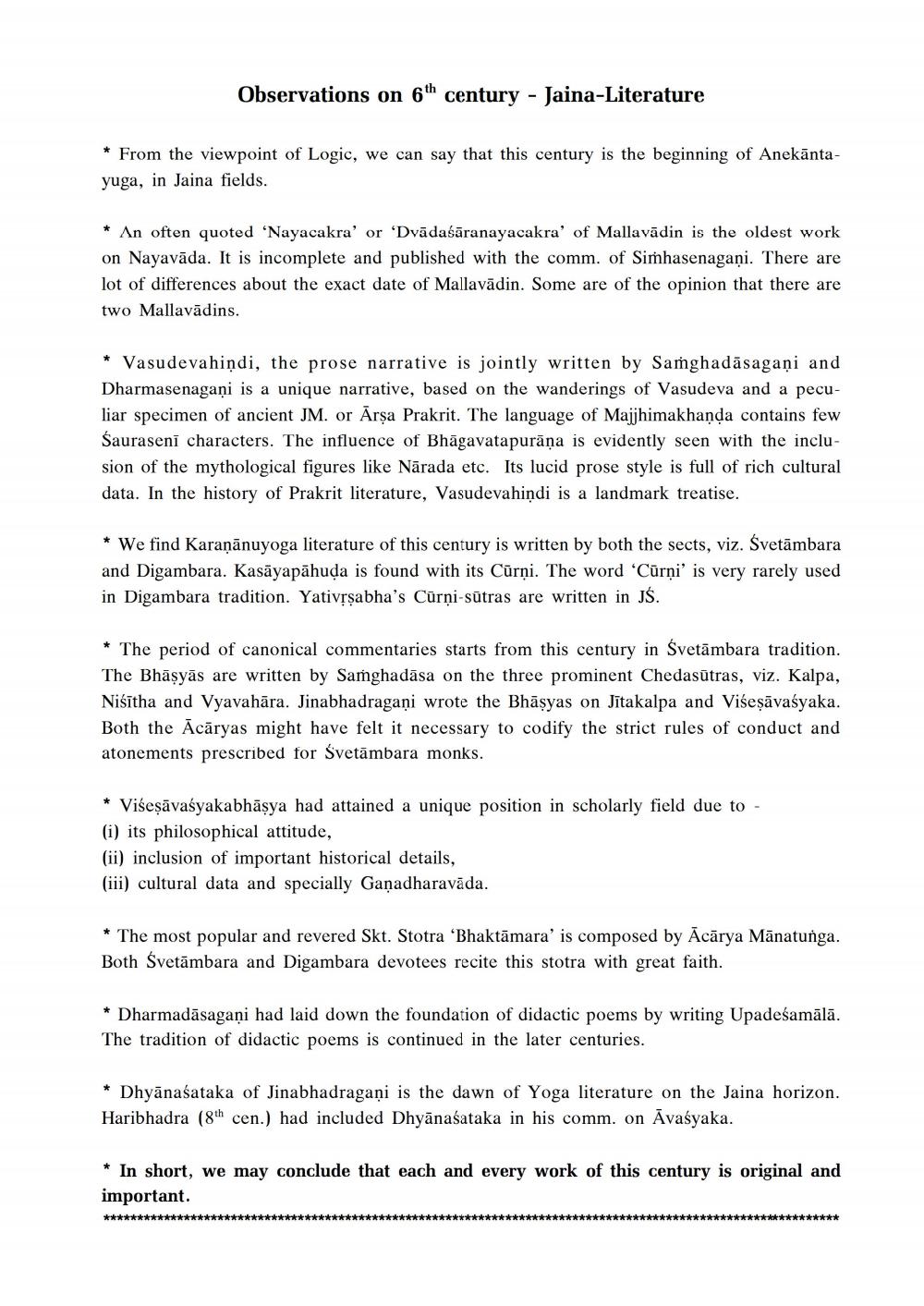Book Title: Brief Survey of Jaina Prakrit and Sanskrit Literature Part 2 Author(s): Nalini Joshi Publisher: Sanmati Tirth Prakashan Pune View full book textPage 2
________________ Observations on 6th century - Jaina-Literature * From the viewpoint of Logic, we can say that this century is the beginning of Anekāntayuga, in Jaina fields. * An often quoted 'Nayacakra' or 'Dvādaśāranayacakra' of Mallavādin is the oldest work on Nayavāda. It is incomplete and published with the comm. of Simhasenagaņi. There are lot of differences about the exact date of Mallavādin. Some are of the opinion that there are two Mallavādins. * Vasudevahiņdi, the prose narrative is jointly written by Samghadāsagani and Dharmasenagaņi is a unique narrative, based on the wanderings of Vasudeva and a peculiar specimen of ancient JM. or Arsa Prakrit. The language of Majjhimakhanda contains few Śauraseni characters. The influence of Bhāgavatapurāņa is evidently seen with the inclusion of the mythological figures like Nārada etc. Its lucid prose style is full of rich cultural data. In the history of Prakrit literature, Vasudevahindi is a landmark treatise. * We find Karaṇānuyoga literature of this century is written by both the sects, viz. Svetāmbara and Digambara. Kasāyapāhuda is found with its Cūrņi. The word 'Cūrņi' is very rarely used in Digambara tradition. Yativrşabha's Cūrņi-sūtras are written in JŚ. * The period of canonical commentaries starts from this century in Svetāmbara tradition. The Bhāṣyās are written by Samghadāsa on the three prominent Chedasūtras, viz. Kalpa, Nisītha and Vyavahāra. Jinabhadragani wrote the Bhāşyas on Jītakalpa and Višeşāvaśyaka. Both the Ācāryas might have felt it necessary to codify the strict rules of conduct and atonements prescribed for Svetāmbara monks. * Višeşāvasyakabhāșya had attained a unique position in scholarly field due to - (i) its philosophical attitude, (ii) inclusion of important historical details, (iii) cultural data and specially Ganadharavāda. * The most popular and revered Skt. Stotra 'Bhaktāmara' is composed by Acārya Manatunga. Both Svetāmbara and Digambara devotees recite this stotra with great faith. * Dharmadāsagani had laid down the foundation of didactic poems by writing Upadeśamālā. The tradition of didactic poems is continued in the later centuries. * Dhyānašataka of Jinabhadragani is the dawn of Yoga literature on the Jaina horizon. Haribhadra (8th cen.) had included Dhyānaśataka in his comm. on Avaśyaka. * In short, we may conclude that each and every work of this century is original and important. **************************************************************************************************************Page Navigation
1 2 3 4 5 6 7 8 9 10 11 12 13 14 15 16 17 18 19 20 21 22
